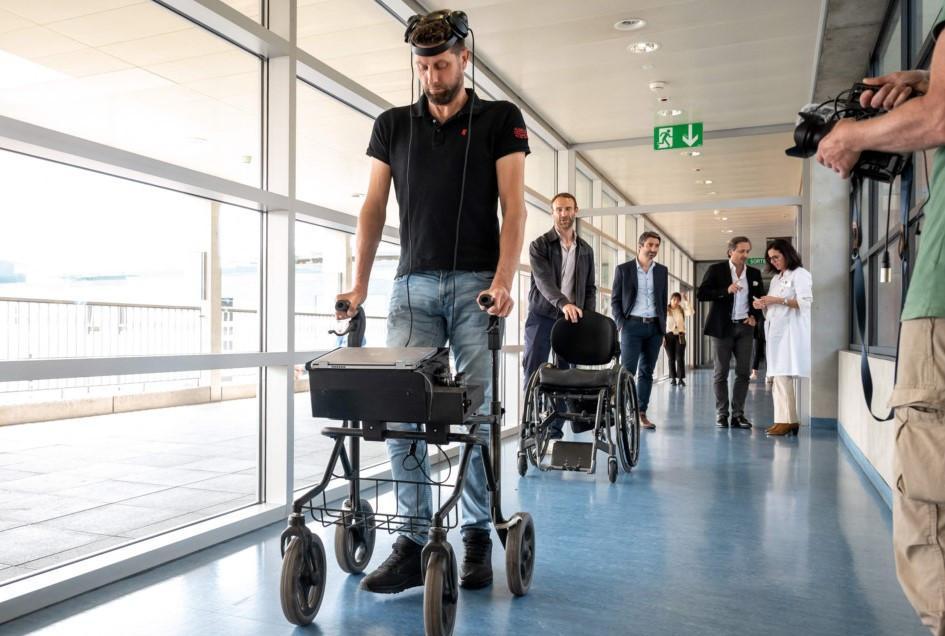
A paralyzed man has regained the ability to walk smoothly using only his thoughts for the first time, researchers said on May 24, thanks to two implants that restored communication between brain and spinal cord.
The patient Gert-Jan, who did not want to reveal his surname, said the breakthrough had given him “a freedom that I did not have” before.
The 40-year-old Dutchman has been paralyzed in his legs for more than a decade after suffering a spinal cord injury during a bicycle accident. But using a new system he can now walk “naturally,” take on difficult terrain and even climb stairs, according to a study published in the journal Nature.
The advance is the result of more than a decade of work by a team of researchers in France and Switzerland.
Last year the team showed that a spinal cord implant, which sends electrical pulses to stimulate movement in leg muscles, had allowed three paralyzed patients to walk again.But they needed to press a button to move their legs each time.
Gert-Jan, who also has the spinal implant, said this made it difficult to get into the rhythm of taking a “natural step.”
The latest research combines the spinal implant with new technology called a brain-computer interface, which is implanted above the part of the brain that controls leg movement.
The interface uses algorithms based on artificial intelligence methods to decode brain recordings in real time, the researchers said.
This allows the interface, which was designed by researchers at France’s Atomic Energy Commission (CEA), to work out how the patient wants to move their legs at any moment.
The data is transmitted to the spinal cord implant via a portable device that fits in a walker or small backpack, allowing patients to get around without help from others.
The two implants build what the researchers call a “digital bridge” to cross the disconnect between the spinal cord and brain that was created during Gert-Jan’s accident.
“Now I can just do what I want - when I decide to make a step the stimulation will kick in as soon as I think about it,” Gert-Jan said.